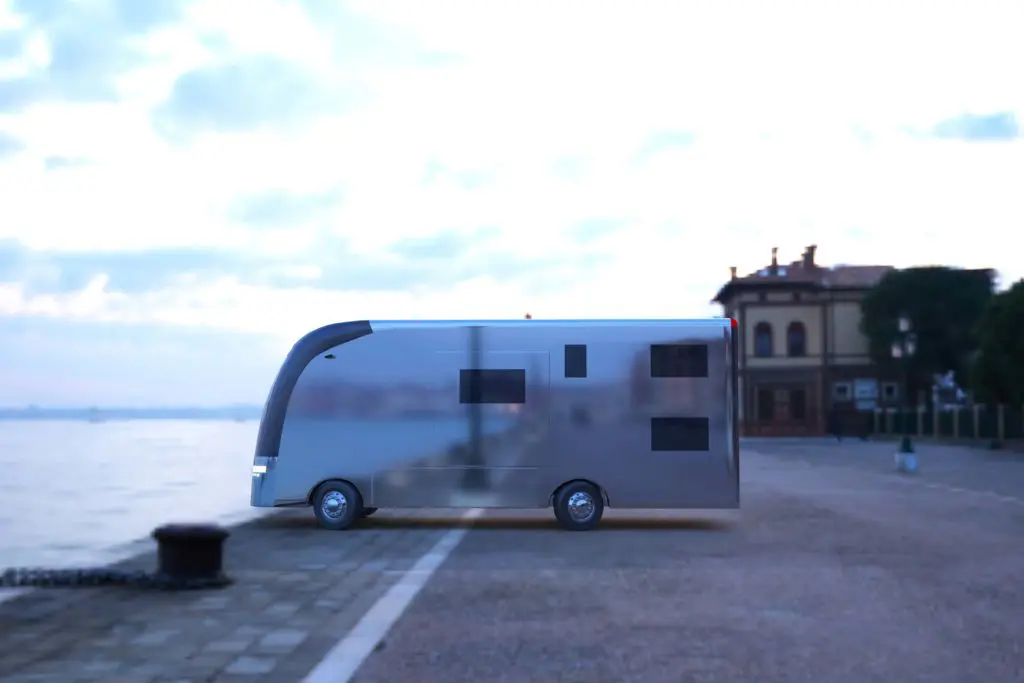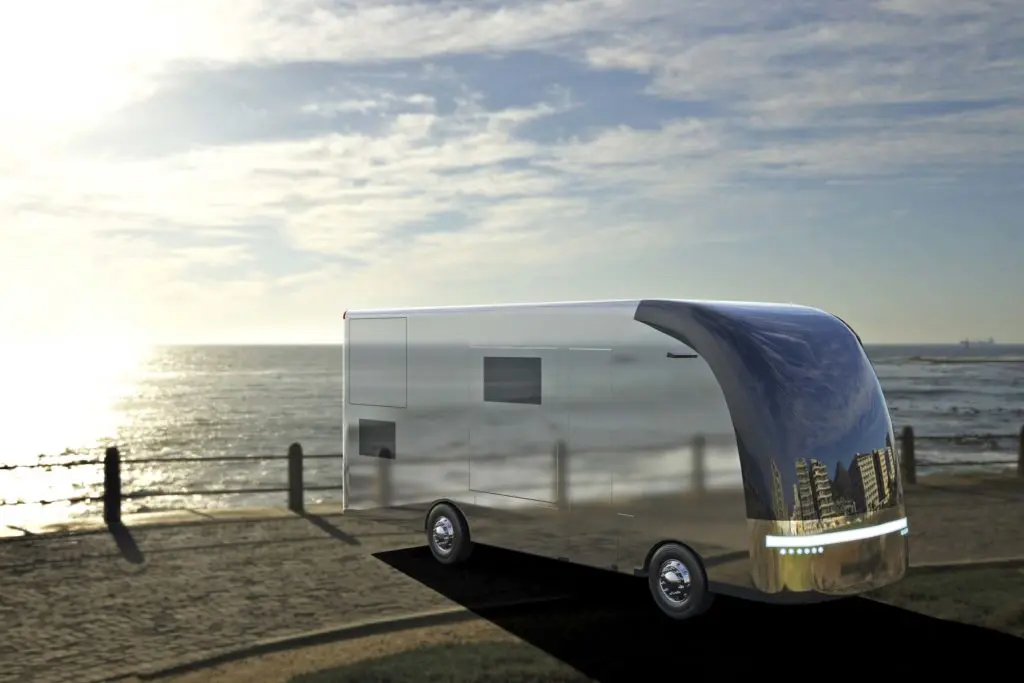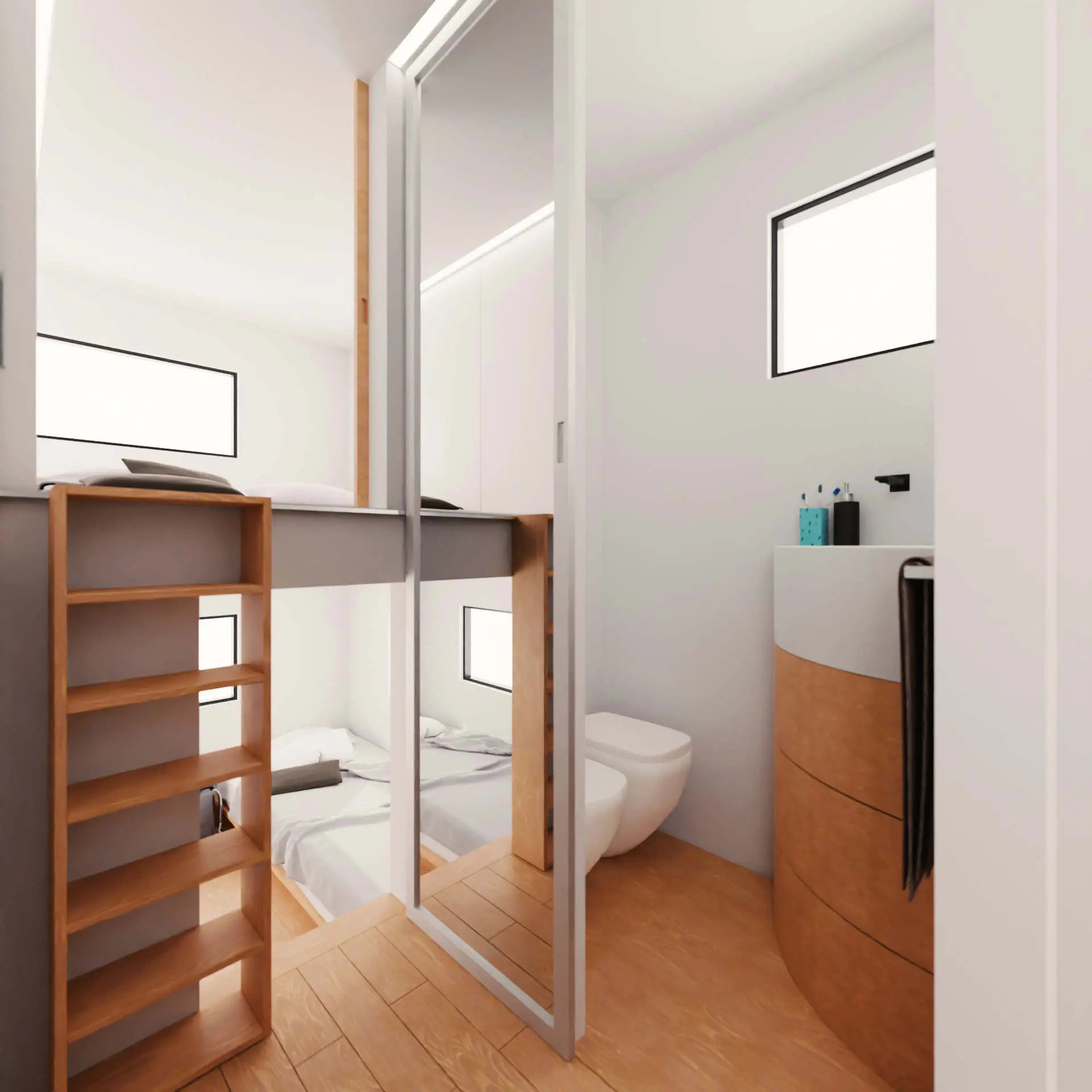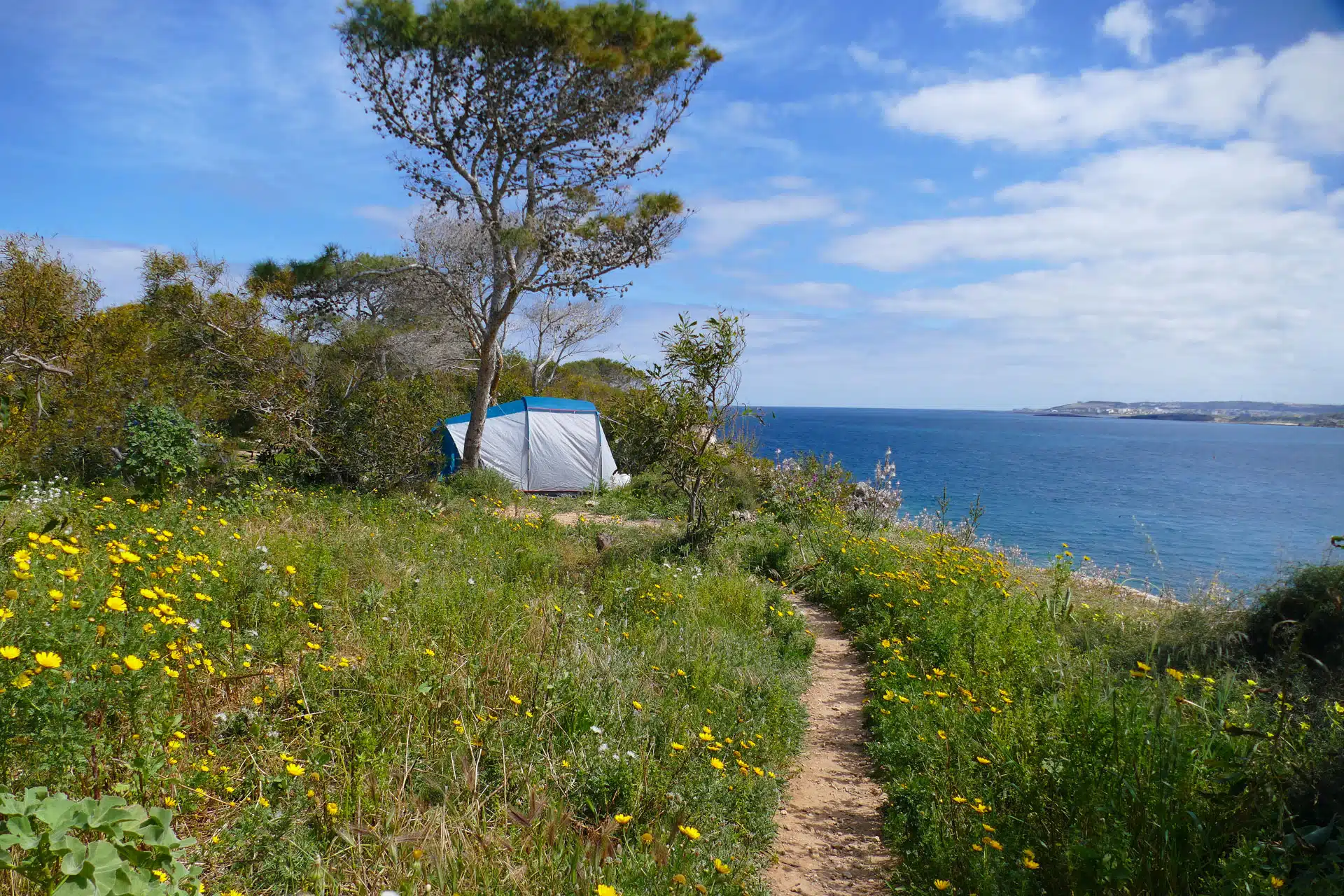New motorhome models and layouts are introduced every year by well-known manufacturers, with brands offering plenty of innovation as technology and materials move forward. But changes remain fundamentally from the same design model. Only occasionally does a motorhome look so radical that it shakes up the perception of what a vehicle looks like, and how it behaves.
That’s the case with Vittra RV, whose mission is to develop a motorhome using the most modern and futuristic technologies from the ground up; to make the most lightweight, energy efficient and all electric-powered motorhome available.
Daniel Amadori, team leader for Vittra RV takes up the story and highlights the principles behind the design, “We noticed many years ago that the RV/motorhome industry, on both sides of the Atlantic Ocean, was often lagging behind state of the art technologies in construction methods, materials, assembly lines etc.
“You’ll often still see RV manufacturing plants where skilled people are welding steel and sawing wood, just as they’ve been doing since the beginning of the industry. But technologies have developed in many fields, so we wanted to take the best technologies, available at a reasonable price, to build the most advanced motorhome ever seen. The global run towards automotive electrification gave us the last push to begin our project.”
One glance at the new Vittra RV motorhome will instantly indicate something different, with its minimalist external box-like design and huge curved visual panel at the front, without any sign of a traditional cab.
Vittra plans to build motorhomes using a brand new construction method that’s patent protected. The company will reveal more about that later in the year, but, for now, they can tell customers that they won’t see much steel in the units. Every part of the structure is shaped to comply with its specific functions: there’s no third-party chassis upon which a camperized structure is placed on top; Vittra build a self-bearing structure that is chassis and frame at the same time.
Besides that, the company has paid attention on how making the vehicle, which measures about 90 cubic meters, looks as discreet as possible from the outside with minimum aesthetic impact. Says Daniel, “We were inspired by architertural experiments and realised that making the outside surface polished and like a mirror makes the shape ‘disappear’ within its surroundings: it is a form of mimesis. Plus, in some way, we hark back to Airstream’s world-famous heritage, so combining the past and future of camping vehicle design.
Power on tour….
Battery range is an ongoing challenge for electric vehicles (EV). A larger battery means more energy, which may lead to increased autonomy; but a larger battery also means a heavier dead load on the vehicle which, instead, decreases the final range. On top of that, efficiency of all systems and aerodynamics are factors that also affect the final range capacity. So the final range of any EV is a balance between many different factors. In the case of the Vittra RV, trials suggest a battery of not less than 160 kWh – twice the capacity of, for example, a Tesla Model S – will provide a total range capacity of not less than 500 km (310 miles) . That sort of range should enable users to drive between plug-ins, without experiencing any range-anxiety.
Added to that, the company are working to allow the motorhome to be capable of squeezing energy from any source available during normal use. Vittra’s main goal is energy efficiency in any form: kinetic, thermic and electric. That includes employing regenerative braking technology to recover energy from deceleration.
… and at home
One of the most notable variants of the Vittra RV by comparison to a traditional motorhome is its design to be connected to the owner’s home as an energy provider. Using its solar technology and battery the motorhome will act as a decentralised storage domestic power supply when not in use on-the-road.
Says Daniel, “Buying a motorome is a major investment for most owners. The compensation for that investment is the great time they have when out travelling with family and friends. But, for much of the time your motorhome will be parked on a driveway, or somewhere else where you have to pay to keep it safe in storage.
“If you own a device that produces 13,4 MW/year, why shouldn’t you take advantage of it and get an economic return from it? That energy is worth thousands of pounds a year. So our solution will allow owners to connect their motorhome to power up their house or other electric vehicles. In addition, we plan to build dedicated Vittra parking areas where owners can park their motorhome and receive compensation for the energy sold to the grid.”
Penthouse apartment-style double-floor living
It’s not only the exterior, or the use of modern electric technologies with which you’ll notice a difference. Step inside and you’ll find the interior an altogether different experience from a standard motorhome available for purchase today.
The aim is to make people living onboard feel as if they’re staying in a comfortable apartment, not a tiny van. While designing the floorplan Vittra wanted to introduce the same cabinetry, furniture, shower and beds to the same size that customers are likely to be used to at home, and to make the interior space as practical as possible. You won’t need to store away beds to have breakfast or to sit on a sofa; you’ll be able to access the washroom while someone else is taking a shower, as is possible in some larger and more upmarket A-Class and coachbuilt motorhomes.
The building structure certainly helps to solve these problems. As there’s no ICE engine, transmission, exhaust system, or even steel beams bearing the floor, there’s more freedom to design. That allows, for example, to be able to realise a double-floor rear bedroom, with the option for building a large storage area below. Plus, the plan is to include three slide-out pods on the nine-metre-long coach, reaching a total of approximately 29 square metres of interior space.
Whimsical fancy, a serious concept vehicle designed to challenge pre-existing norms, or a ready prepared production line for multiple output? Vittra’s goal is to begin a serial production of the vehicle as quickly as possible. Says Daniel, “We believe we have all the necessary requirements to change the rules of the global RV/motorhome industry. We have accomplished a lot since the beginning, even when only relying on our personal resources. Now we are having discussions with bigger investors to find the right one(s) to back us up through the next big steps. So if there are any enthusiastic investors out there, contact us and let’s have a chat!”










